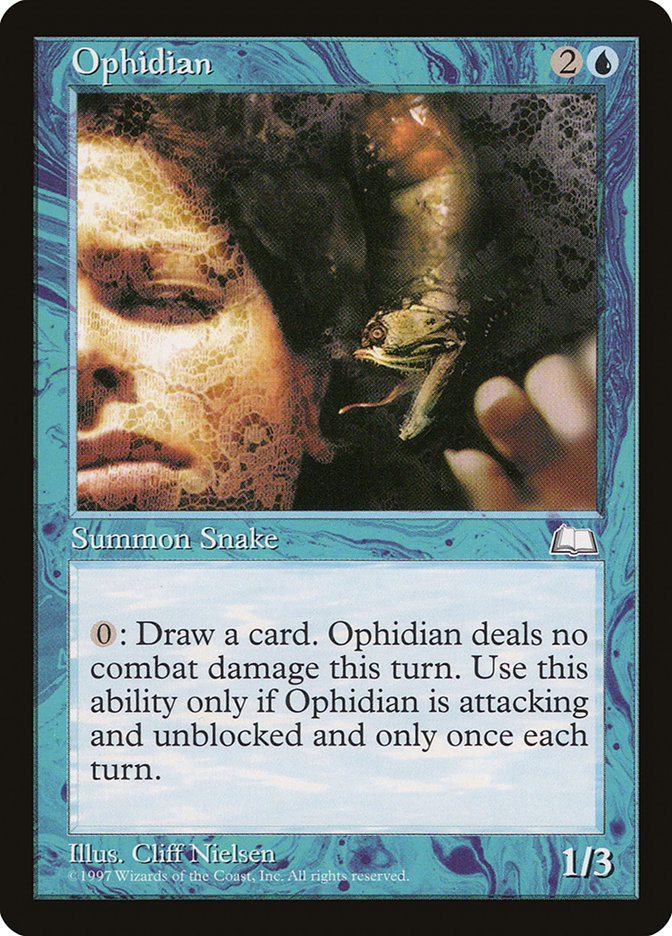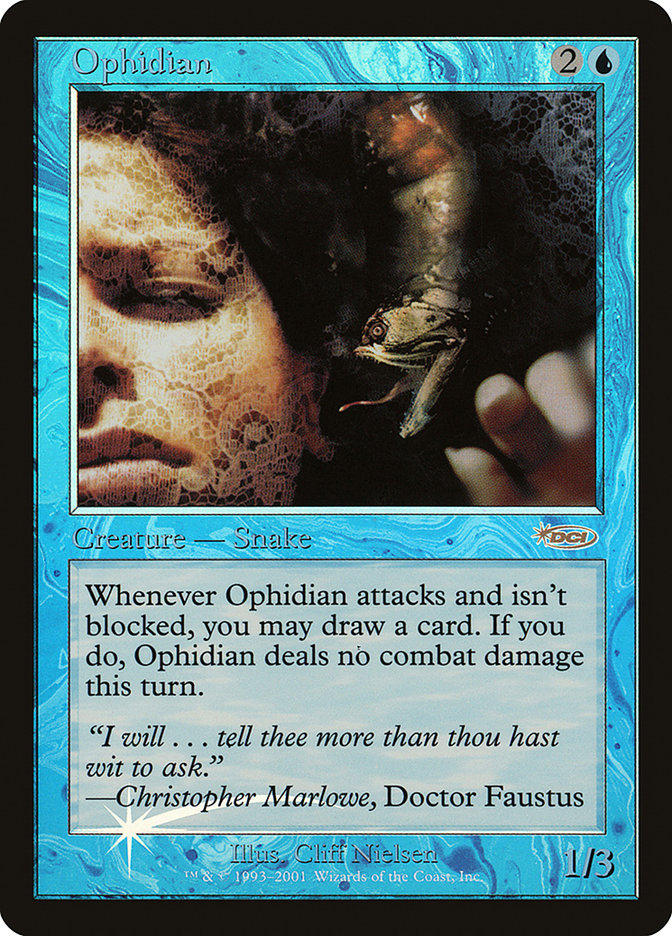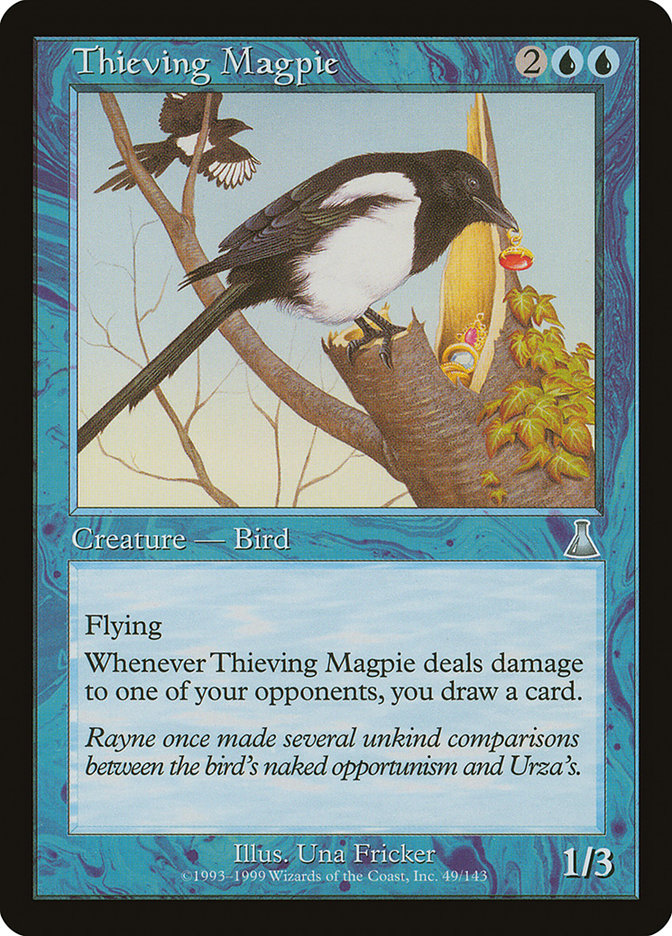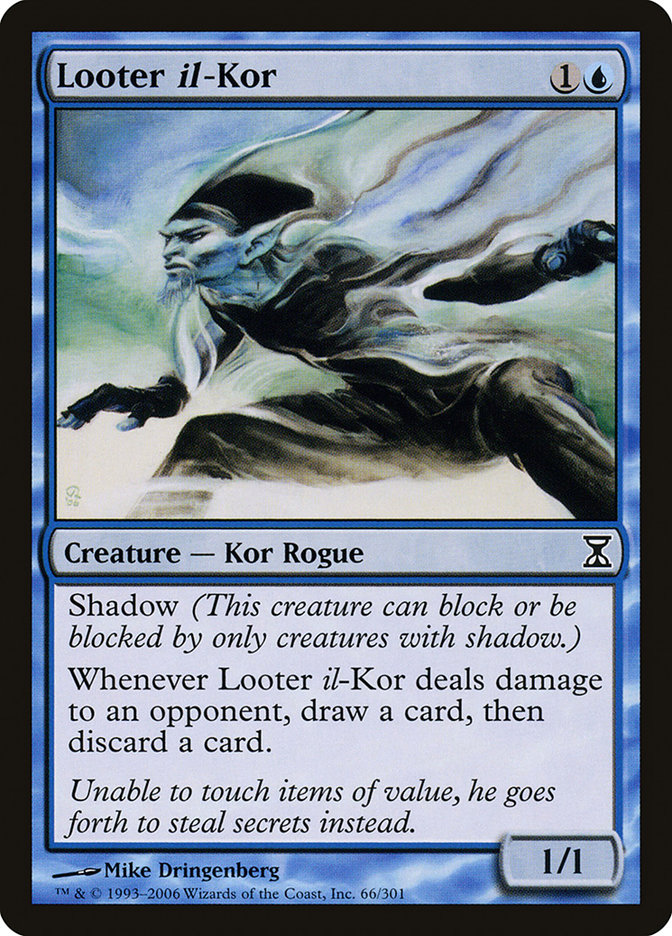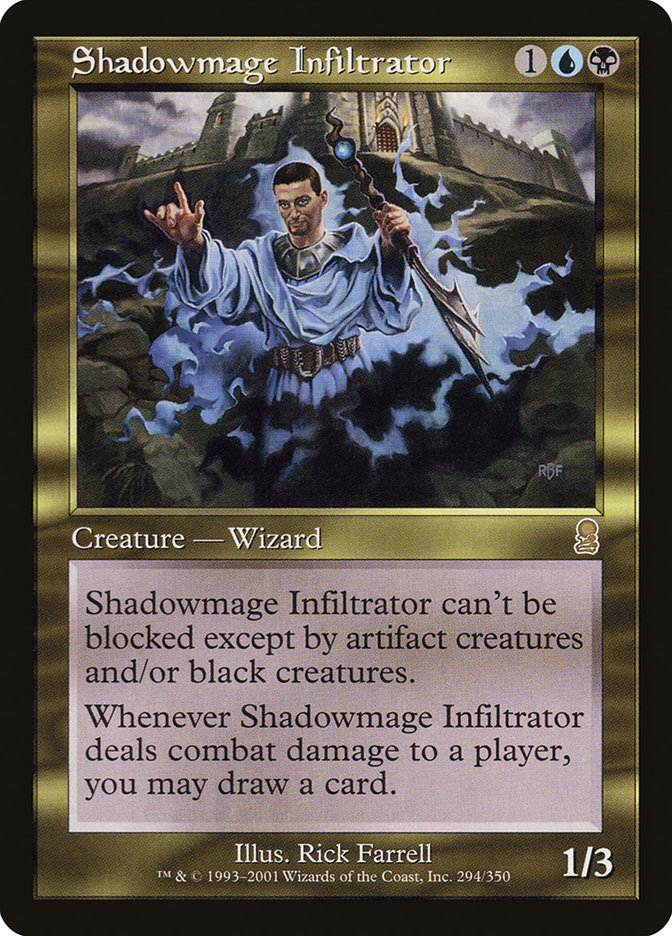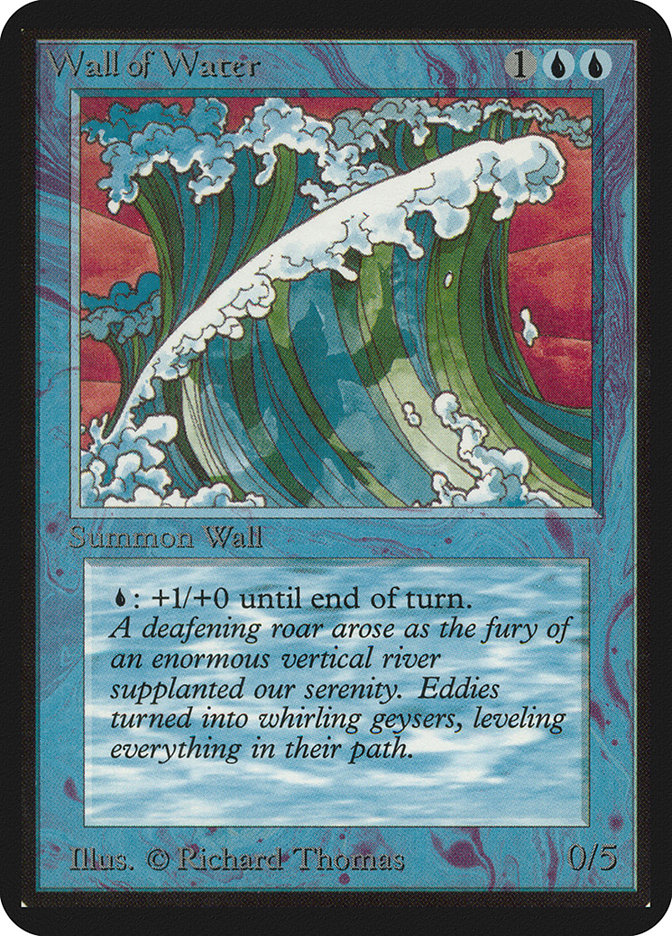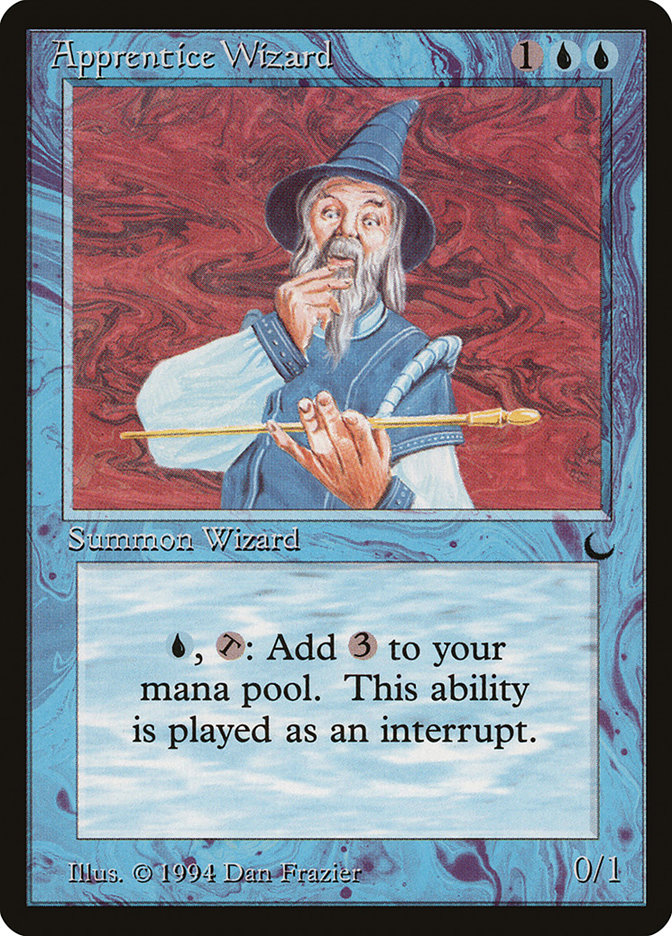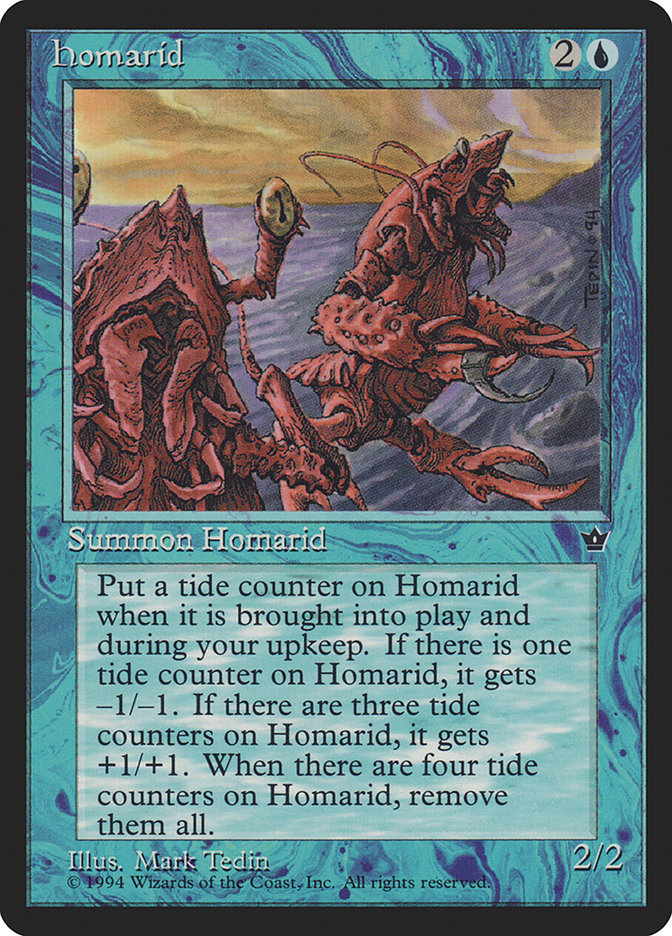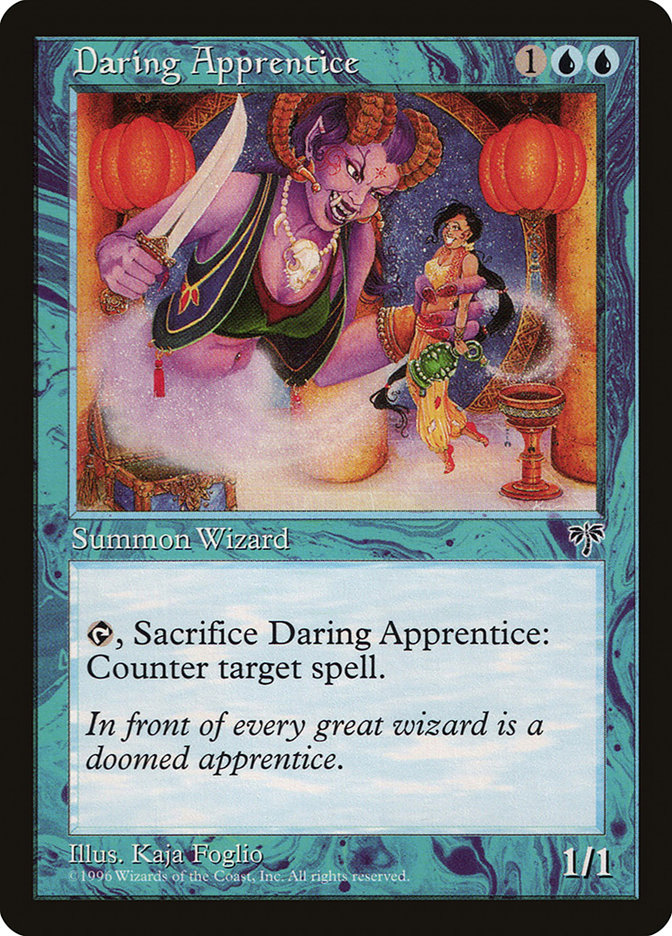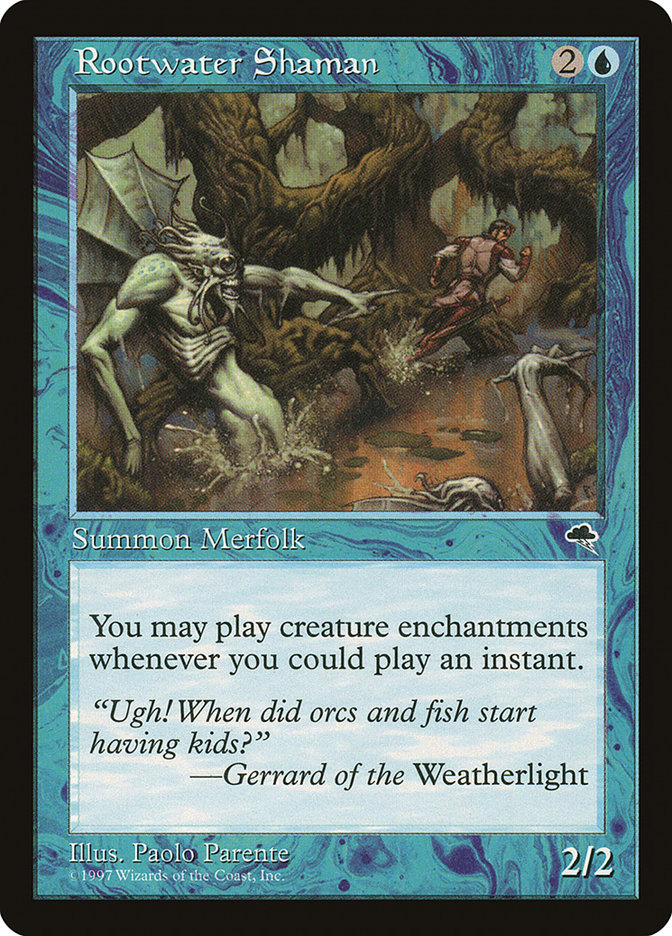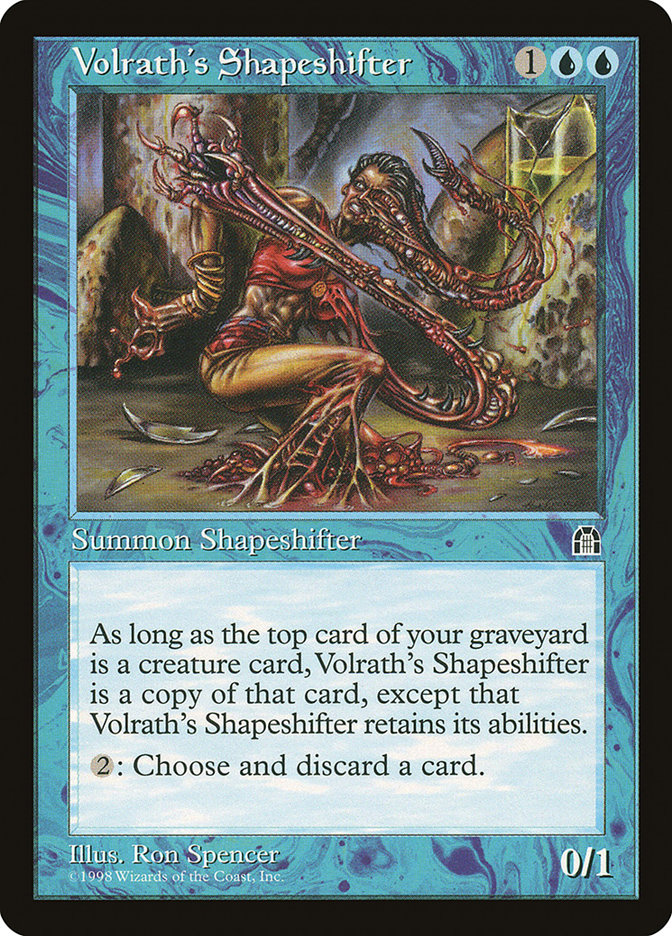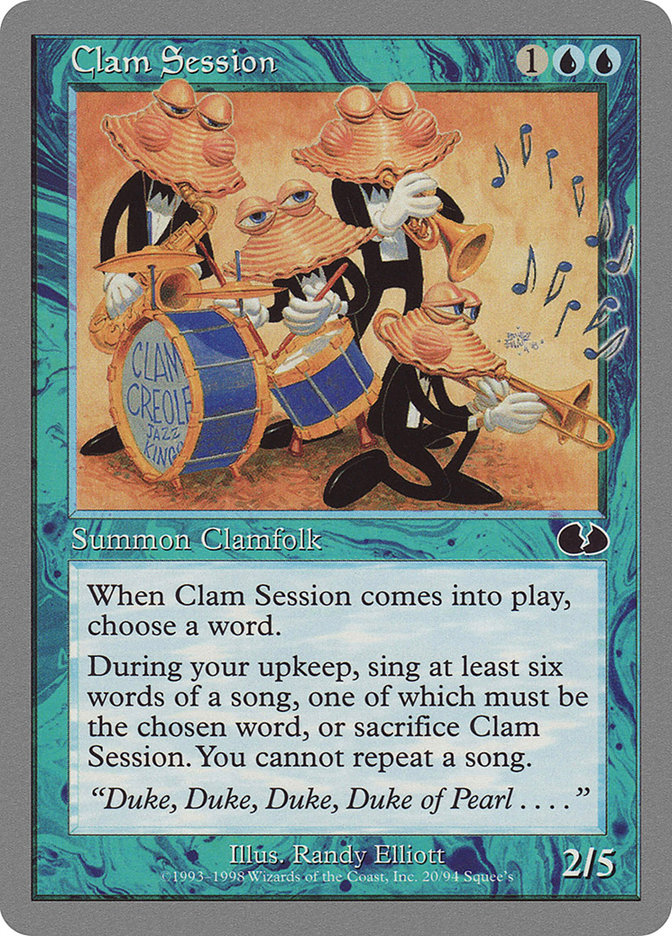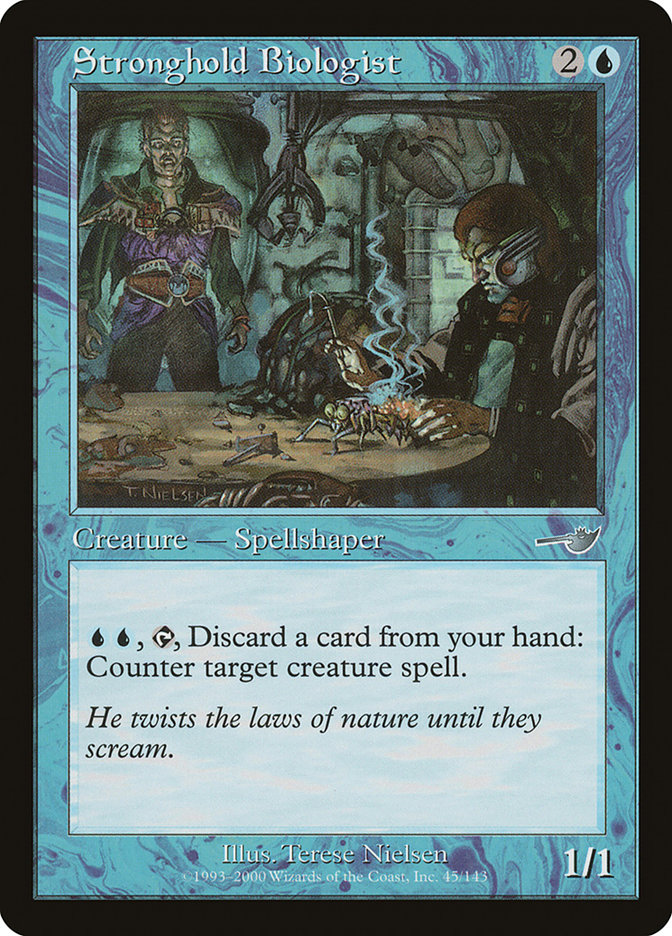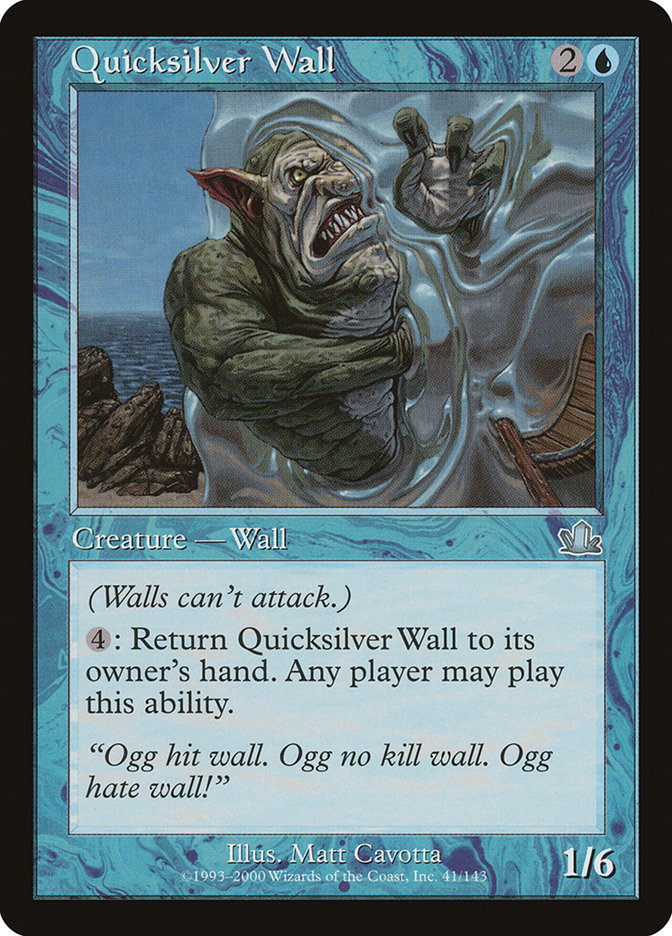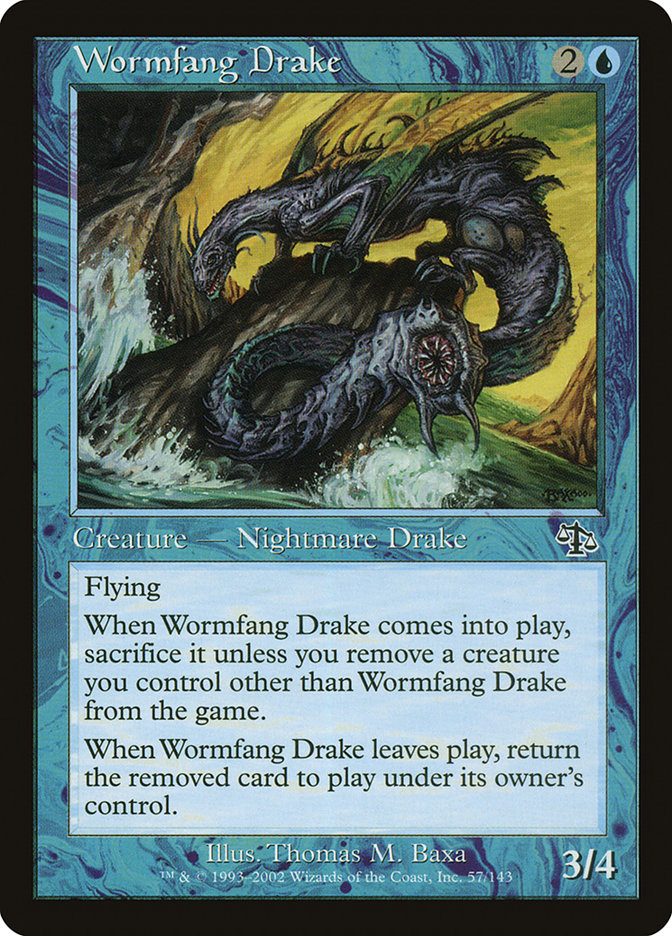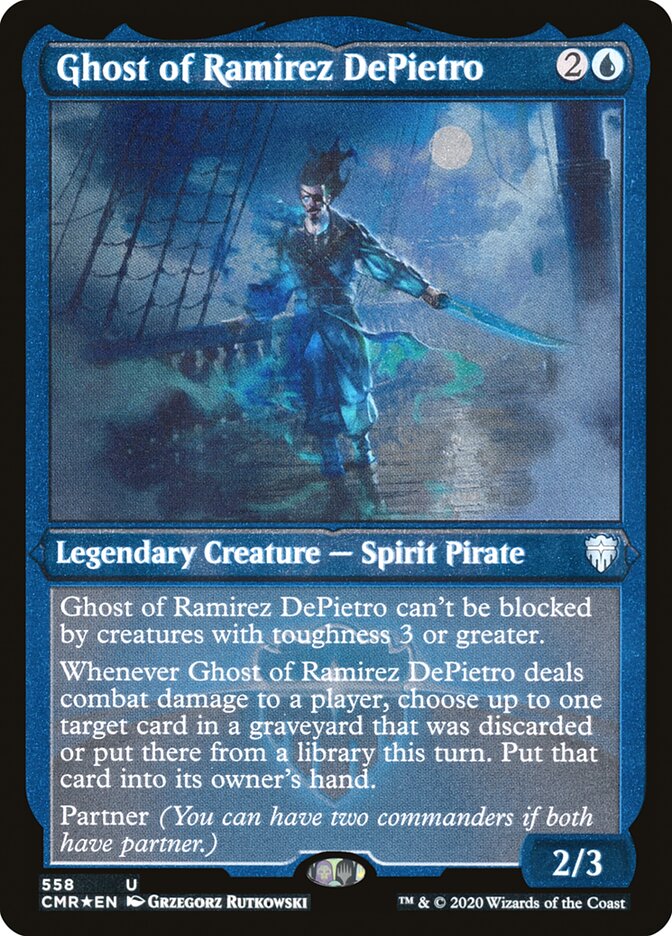Ophidian MTG Card
| Card sets | Released in 7 setsSee all |
| Mana cost | |
| Converted mana cost | 3 |
| Rarity | Common |
| Type | Creature — Snake |
| Power | 1 |
| Toughness | 3 |
Text of card
: Draw a card. Ophidian deals no combat damage this turn. Use this ability only if Ophidian is attacking and unblocked and only once each turn.
Cards like Ophidian
Ophidian is a unique creature card that shines in its ability to draw cards much like other card advantage creatures in Magic: The Gathering. Ophidian allows its controller to draw a card whenever it deals combat damage to an opponent, provided that the damage is forfeited. This is similar to Thieving Magpie, which lets the player draw a card each time it deals damage to an opponent without any need to forfeit the damage.
In the realm of blue creatures that facilitate card draw, Looter il-Kor also stands out. This creature does require the player to discard a card when it connects with the opponent, which pairs card selection with card advantage. However, unlike Ophidian, it doesn’t necessitate that you skip the damage to reap the card benefit. Meanwhile, Shadowmage Infiltrator offers card draw on damage without needing to skip damage and comes with the added benefit of being more difficult to block thanks to its fear ability.
While each of these cards offer their own twist on drawing cards, Ophidian remains an intriguing option, especially for players who prioritize card advantage over dealing damage and can reliably ensure its attack connects.
Cards similar to Ophidian by color, type and mana cost
Card Pros
Card Advantage: When Ophidian successfully deals combat damage to a player, its ability to draw a card kicks in, bolstering your hand and potentially turning the tide in your favor. This consistent mechanism is favored by players aiming to outmaneuver opponents through superior card options.
Resource Acceleration: While Ophidian itself isn’t a direct source of mana, the card advantage it provides can lead to quicker access to resources. By drawing extra cards, you’re more likely to hit land drops and spell curves efficiently, thus accelerating your gameplay significantly.
Instant Speed: Ophidian’s ability works best when paired with instants or flash-enabling effects that can manipulate combat or protect it. Such synergy allows savvy players to dictate the flow of combat, maintaining the threat of drawing cards while keeping mana available for instant speed interactions, thus maximizing the potential value gained each turn.
Card Cons
Discard Requirement: Engaging with the playful Ophidian requires a tactical mindset, as the card necessitates you to successfully deal combat damage to a player to draw cards. If the Ophidian is consistently blocked or removed before it deals damage, the card draw potential becomes a missed opportunity, making it less reliable than other draw engines.
Specific Mana Cost: Ophidian’s blue mana cost aligns it with the cerebral depths of blue’s color pie, yet this specificity may deter its inclusion in multicolored or non-blue centric decks. This can make deck building less flexible for players seeking a broad range of strategies.
Comparatively High Mana Cost: With a casting cost that taps into two blue mana and one of any color, Ophidian’s investment can be demanding when weighing its 1/3 stats and potential card advantage against other options. Although it promises knowledge through card draw, the initial high mana cost can slow down your game plan, especially in faster-paced matches where board impact is critical from the onset.
Reasons to Include Ophidian in Your Collection
Versatility: Ophidian offers a unique blend for blue-centric strategies, applicable in control or tempo decks. Its ability to draw cards without dealing combat damage makes it a useful tool for maintaining card advantage.
Combo Potential: The card pairs well with abilities that allow it to deal damage or tap without being blocked, such as those that grant unblockability or “tap target creature” effects, maximizing its card-drawing capability.
Meta-Relevance: In environments where slower, more controlling decks prevail, Ophidian thrives by consistently providing its controller with more options and resources, keeping pace with the game’s demands.
How to beat
The Ophidian card is a unique presence on the battlefield, often posing quite the challenge for opponents. Its ability to draw cards when it deals combat damage to a player and simultaneously prevents typical combat damage makes it a slippery target. Flanked by this combination, Ophidian can maintain a player’s hand advantage and progressively tilt the game in their favor, if left unchecked.
To effectively combat this threat, one reliable strategy is to eliminate Ophidian before it has the opportunity to wield its ability. Removal cards, especially those that can target creatures regardless of their size or abilities, can deal with the Ophidian directly. Alternatively, counterspell tactics can prevent Ophidian from ever hitting the field. Another approach is to employ creatures with high toughness, creating a sturdy defensive line that Ophidian cannot bypass without its owner risking it in combat.
Although Ophidian’s capacity for card advantage is formidable, with the correct removal tools and strategic planning, the threat it poses can be mitigated. Ensuring you have the answers ready in your deck is key to not letting Ophidian and its card-drawing capabilities overwhelm your game plan.
Where to buy
If you're looking to purchase Ophidian MTG card by a specific set like Weatherlight and World Championship Decks 1997, there are several reliable options to consider. One of the primary sources is your local game store, where you can often find booster packs, individual cards, and preconstructed decks from current and some past sets. They often offer the added benefit of a community where you can trade with other players.
For a broader inventory, particularly of older sets, online marketplaces like TCGPlayer, Card Kingdom and Card Market offer extensive selections and allow you to search for cards from specific sets. Larger e-commerce platforms like eBay and Amazon also have listings from various sellers, which can be a good place to look for sealed product and rare finds.
Additionally, Magic’s official site often has a store locator and retailer lists for finding Wizards of the Coast licensed products. Remember to check for authenticity and the condition of the cards when purchasing, especially from individual sellers on larger marketplaces.
Below is a list of some store websites where you can buy the Ophidian and other MTG cards:
 BUY NOW
BUY NOW BurnMana is an official partner of TCGPlayer
- eBay
- Card Kingdom
- Card Market
- Star City Games
- CoolStuffInc
- MTG Mint Card
- Hareruya
- Troll and Toad
- ABU Games
- Card Hoarder Magic Online
- MTGO Traders Magic Online
See MTG Products
Printings
The Ophidian Magic the Gathering card was released in 7 different sets between 1997-06-09 and 2014-12-05. Illustrated by Cliff Nielsen.
| # | Released | Name | Code | Symbol | Number | Frame | Layout | Border | Artist |
|---|---|---|---|---|---|---|---|---|---|
| 1 | 1997-06-09 | Weatherlight | WTH | 45 | 1997 | Normal | Black | Cliff Nielsen | |
| 2 | 1997-08-13 | World Championship Decks 1997 | WC97 | pm45 | 1997 | Normal | Gold | Cliff Nielsen | |
| 3 | Friday Night Magic 2001 | F01 | 7 | 1997 | Normal | Black | Cliff Nielsen | ||
| 4 | Magic Online Promos | PRM | 36022 | 1997 | Normal | Black | Cliff Nielsen | ||
| 5 | 2008-11-07 | Duel Decks: Jace vs. Chandra | DD2 | 9 | 2003 | Normal | Black | Cliff Nielsen | |
| 6 | 2014-06-16 | Vintage Masters | VMA | 84 | 2015 | Normal | Black | Cliff Nielsen | |
| 7 | 2014-12-05 | Duel Decks Anthology: Jace vs. Chandra | JVC | 9 | 2015 | Normal | Black | Cliff Nielsen |
Legalities
Magic the Gathering formats where Ophidian has restrictions
| Format | Legality |
|---|---|
| Commander | Legal |
| Legacy | Legal |
| Paupercommander | Legal |
| Oathbreaker | Legal |
| Pauper | Legal |
| Premodern | Legal |
| Vintage | Legal |
| Duel | Legal |
| Predh | Legal |
| Penny | Legal |
Rules and information
The reference guide for Magic: The Gathering Ophidian card rulings provides official rulings, any errata issued, as well as a record of all the functional modifications that have occurred.
| Date | Text |
|---|---|
| 2013-04-15 | An ability that triggers when something “attacks and isn’t blocked” triggers in the declare blockers step after blockers are declared if (1) that creature is attacking and (2) no creatures are declared to block it. It will trigger even if that creature was put onto the battlefield attacking rather than having been declared as an attacker in the declare attackers step. |
